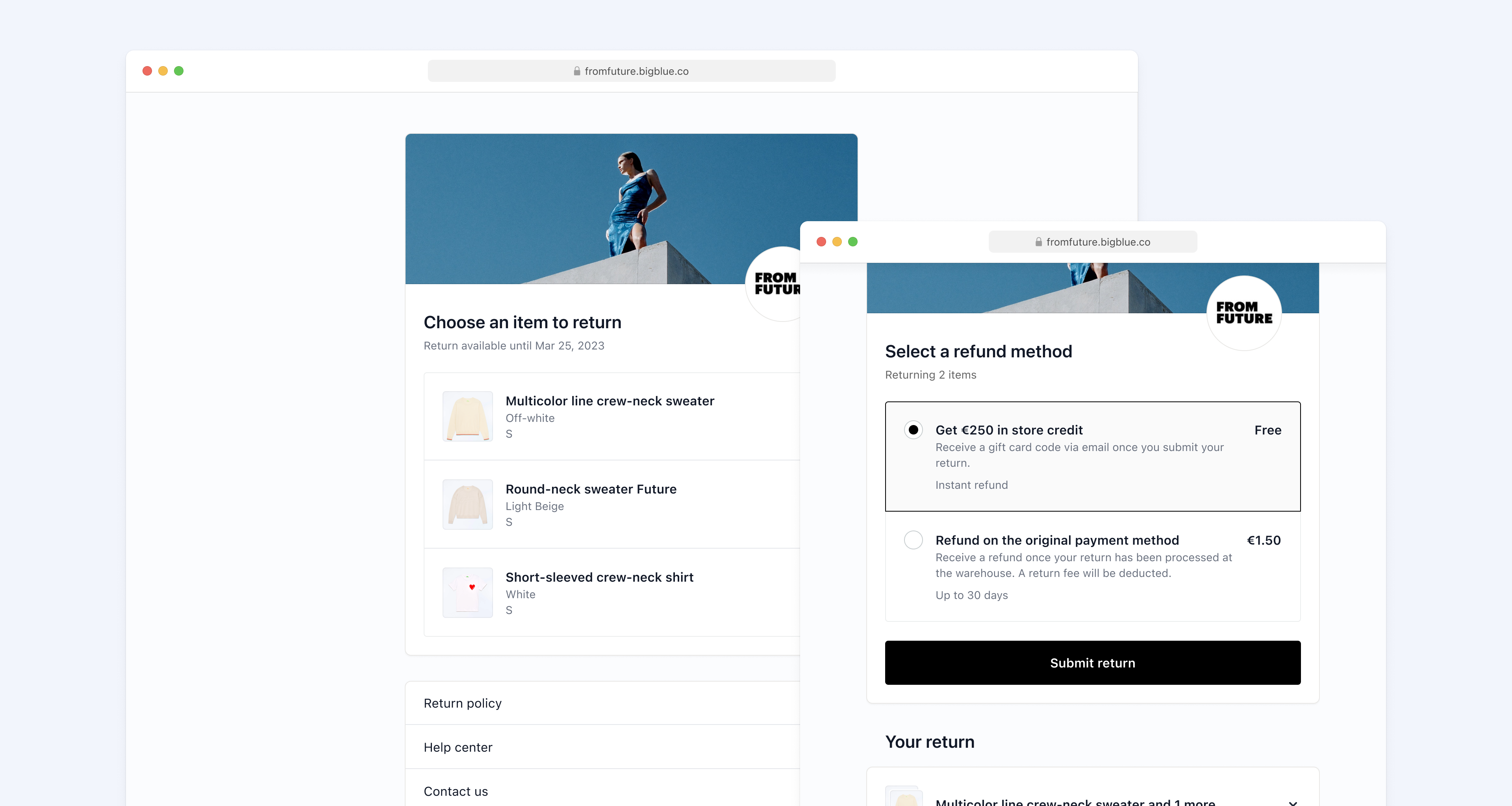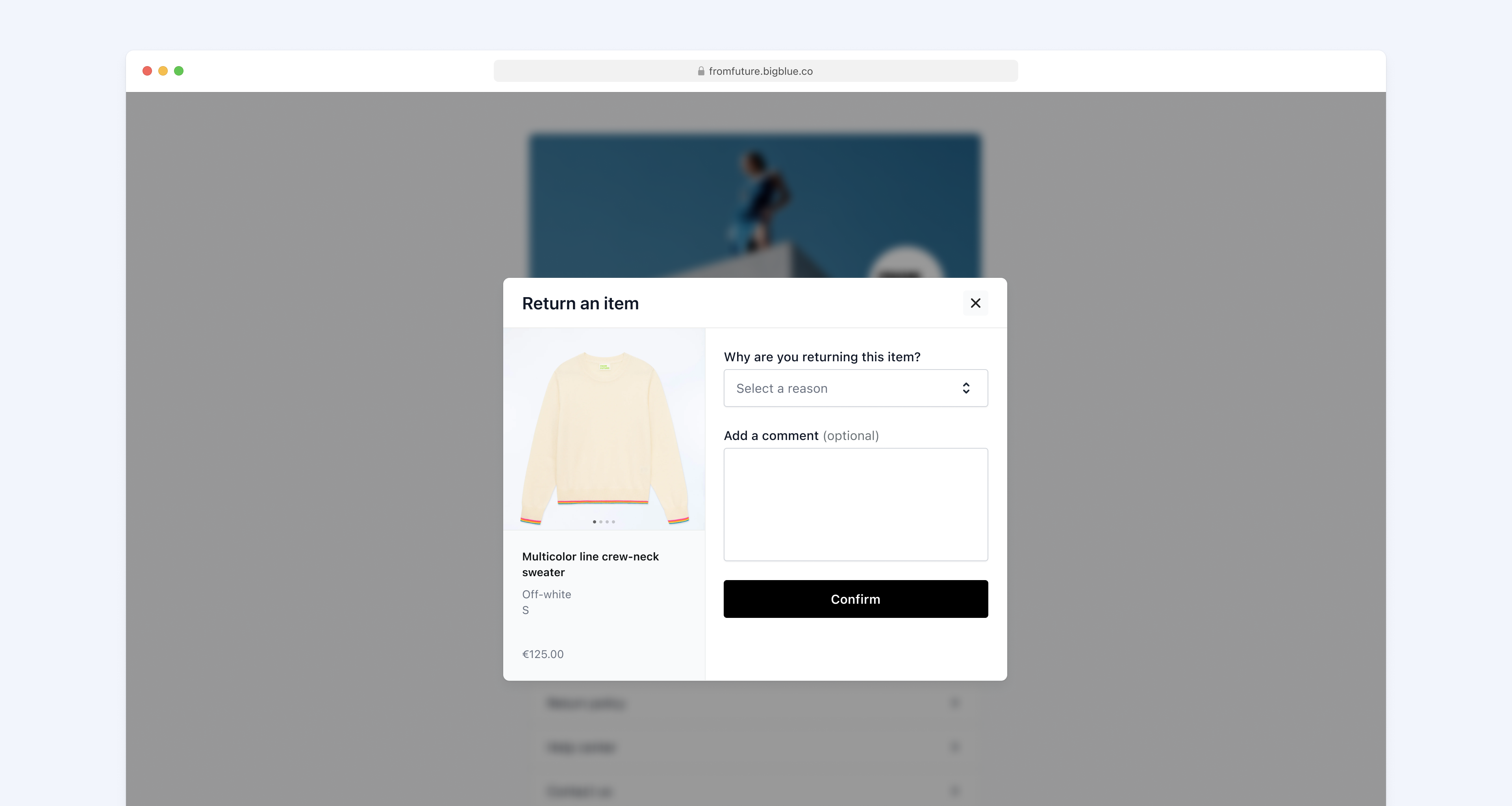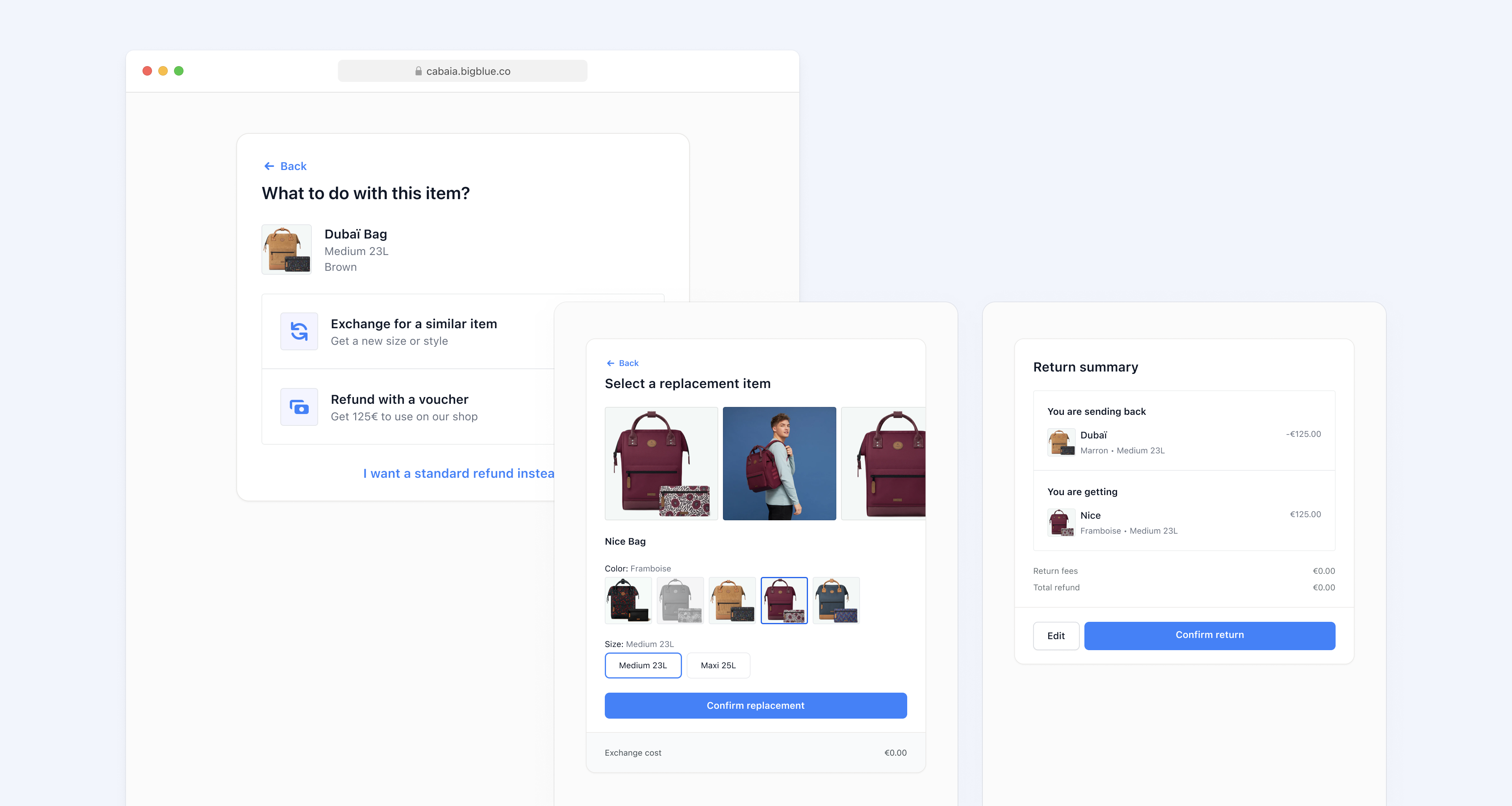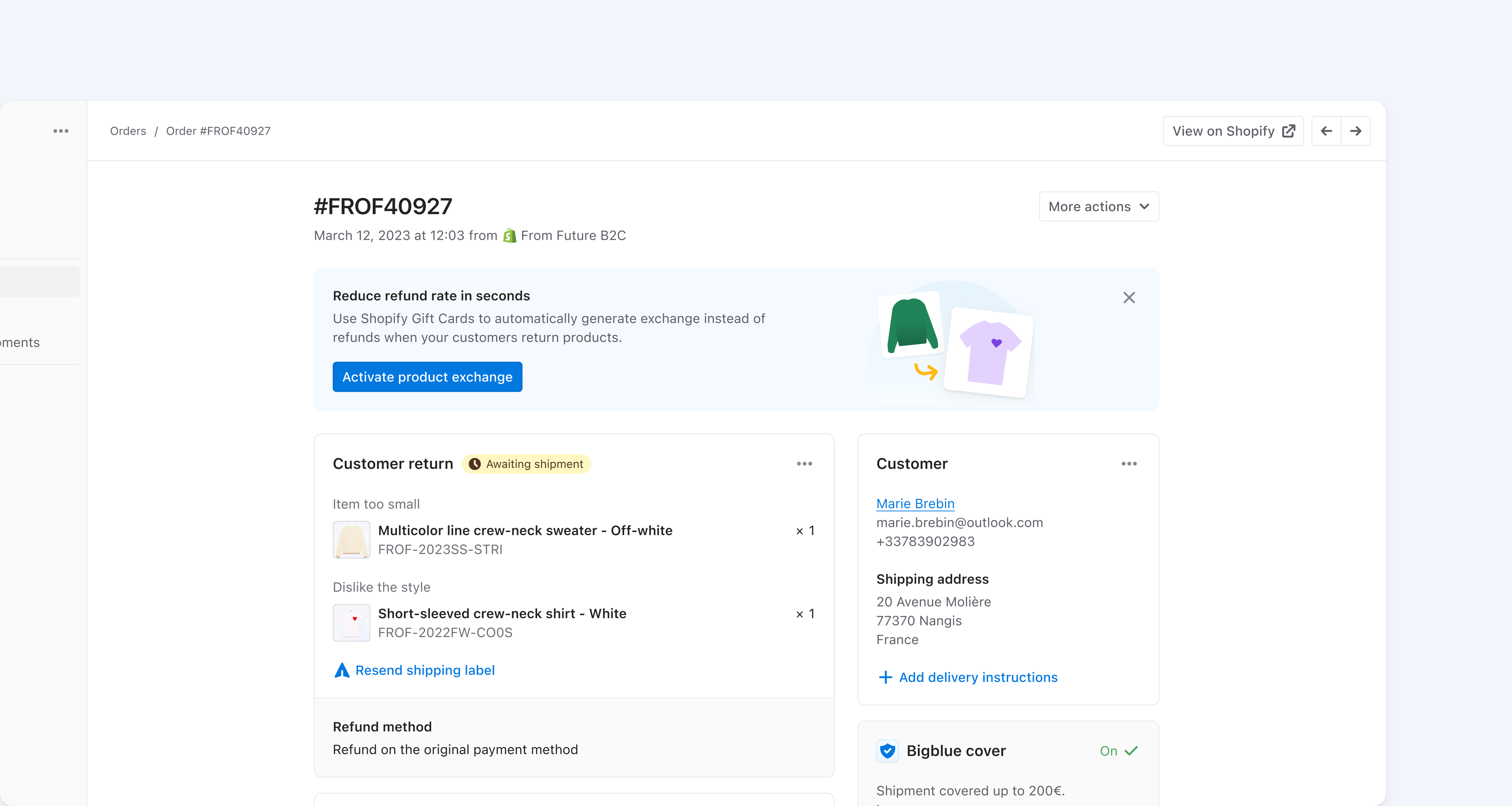How Bigblue is turning e-commerce returns into growth

TLDR
We built a way for customers to exchange products for their online orders.
It led to a 45% reduction in order refunds and a notable 20% increase in Average Order Value (AOV) for the second purchase.
The story so far
Bigblue offers plug-and-play logistics for e-commerce. We prepare and ship orders for brands, while helping them sell more.
Fashion brands have to deal with a lot of returned products. To address this, we had developed an automated return portal, allowing customers to initiate returns without contacting the brand.
When we started this initiative, entrepreneurs were reluctant to promote access to the return portal to their customers, out of fear is would impact their margin. This led to more work for the brands’ support team, making them more likely to disable the feature.
In this project, I led the return experience design, working with a product manager and 2 software engineers.
Our goal was to reduce churn for our return management solution and make it a strong selling point for the fashion industry.

Engaging with fashion brand leaders
Our first step was to meet with return portal users and other fashion brand leaders to understand why they favored relying on their support team.
One of our core assumptions was that easy and free returns significantly influenced online fashion purchases, ultimately boosting conversions more than raising the return rate.
Most entrepreneurs we talked to shared this belief. Yet, they couldn’t take the risk of having to refund more customers than ever. They would then create a little bit of friction by requiring customers to contact support.
Identifying opportunities
Based on our research and data, I built an opportunity map to visually outline potential outcomes. I iterated and challenged the opportunities with the help of my team and stakeholders.
Our data highlighted that 70% of returns were due to size-related issues. Starting from there, we decided to focus on product exchange.
The concept was pretty straightforward: provide customers the option to exchange items for a different size instead of requesting a refund. Our goal was to mitigate financial risks for brands, allowing them to reduce support efforts on returns.

Enabling product exchange
Pairing with software engineers, we identified that integrating product exchange directly in the return portal would require a lot of effort. Given the time we had, we decided to build an MVP based on gift codes.
When customers choose the exchange option, we provide them with a gift code for the amount of their order. They can then use this code to repurchase the desired items from the store.

Build and polish
I built a user flow to get a proper view of the whole process, from unboxing to purchasing the exchanged product. We named this feature “Store credit”.
To ensure customers understood the benefits of Store credit, I conducted live and remote test sessions. The overall feedback was positive, though it did highlight some aspects that required iteration and improvement.
Documentation, handoff, and live building sessions allowed us to ship the feature on time. From there, we promoted it and began monitoring its impact.
Making Store credit a clear winner
Flash forward to a few weeks after the release. While the brands’ feedback was positive, but our team found the percentage of customers using Store Credit to be underwhelming. We aimed for a more substantial impact on the brands we worked with.
We discovered that a significant portion of customers still opted for a refund, even when offered the exchange option. They felt that a refund was “safer”, in case they changed their mind.
To address this, we ran several experiments, testing was to better highlight the benefits of the Store Credit. Those experiments helped us learn and reduce the share of refunds.

How it impacts fashion brands
Metrics have shown that Store credit helped brands reduce support burden. For example, 90% of them now grant full access to their return portal, making the customer fully autonomous.
In addition to this, Store credit became a powerful tool for merchant growth: 45% of customers choose it instead of a refund, allowing merchants to retain revenue. Our data also shows that orders using Store credit have an average 20% increase in value compared to the initial order.
